Italian fleet will not fail!
Laughter, as you know, prolongs life, and when it comes to Regia Marina Italiana, life is doubly extended.
An explosive mixture of Italian vitality, negligence and sloppiness can turn into a farce any useful undertaking. There are legends about the Royal Naval Forces of Italy: during the war years Italian sailors achieved a fantastic result - losses fleet exceeded the payroll of the Italian Navy! Almost every Italian ship perished / sank / was captured during his service twice, and sometimes even thrice.
There is no other ship in the world, similar to the Italian battleship Conte di Cavour. For the first time, a formidable battleship was sunk in its anchorage on November 12, 1940 during a British raid aviation on the Navy Taranto. "Cavour" was raised from the bottom and stood the whole war in repair, until it was flooded by its own crew in September 1943 with the threat of capture by German troops. A year later, the Germans raised the battleship, but at the end of the war, the Cavour was again destroyed by Allied aircraft.
The mentioned attack on the naval base of Taranto was a textbook example of Italian punctuality, accuracy and sense of duty. The pogrom in Taranto, perpetrated by British pilots, is comparable in size to Pearl Harbor, but the British took twenty times less effort than the Japanese hawks to attack the American base in Hawaii.
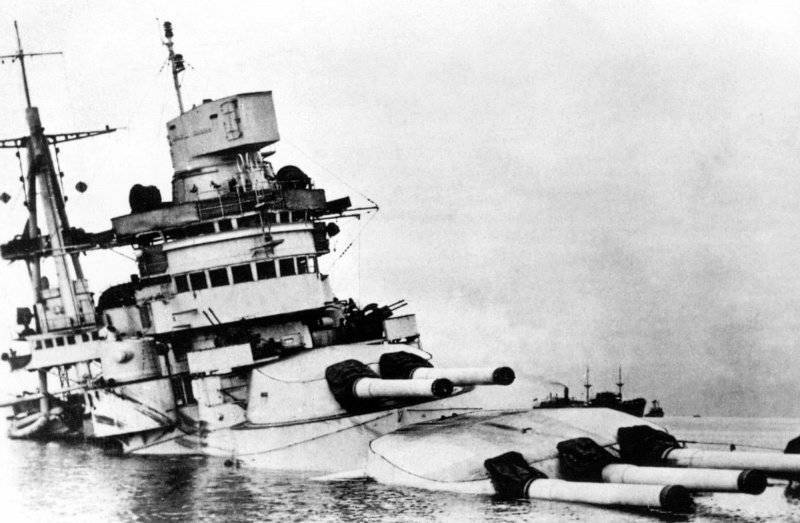
20 plywood biplanes "Swordfish" in one night smashed to shreds the main base of the Italian fleet, sinking three battleships right on the anchorages. For comparison, in order to “get” the German Tirpitz, hiding in the polar Alten fjord, British aircraft had to make about 700 combat missions (not counting sabotage using mini-submarines).
The reason for the deafening defeat in Taranto is elementary - the industrious and responsible Italian admirals, for unclear reasons, did not properly pull the anti-torpedo network. For which he paid.
Other incredible adventures of the pasta of the Italian sailors look equally nasty:
- the submarine Ondina fell in an unequal struggle with the South African trawlers Protea and the Southern Maid (battle off the coast of Lebanon, July 11 1942);
- the destroyer Sebeniko was boarded by the crew of a German torpedo boat right in the port of Venice 11 on September 1943 of the year - immediately after the surrender of fascist Italy. The former allies threw the Italians overboard, took away the destroyer and, renaming "Sebeniko" to TA-43, used it to protect the Mediterranean convoys until the spring of the year 1945.
- Italian submarine "Leonardo da Vinci" flunked the high-speed 21000-ton airliner "Empress of Canada" off the coast of Africa. There were 1800 people aboard the ship (400 died) - half of which, ironically, were Italian prisoners of war.
(however, the Italians are not alone here - such situations occurred regularly during the Second World War)
etc.
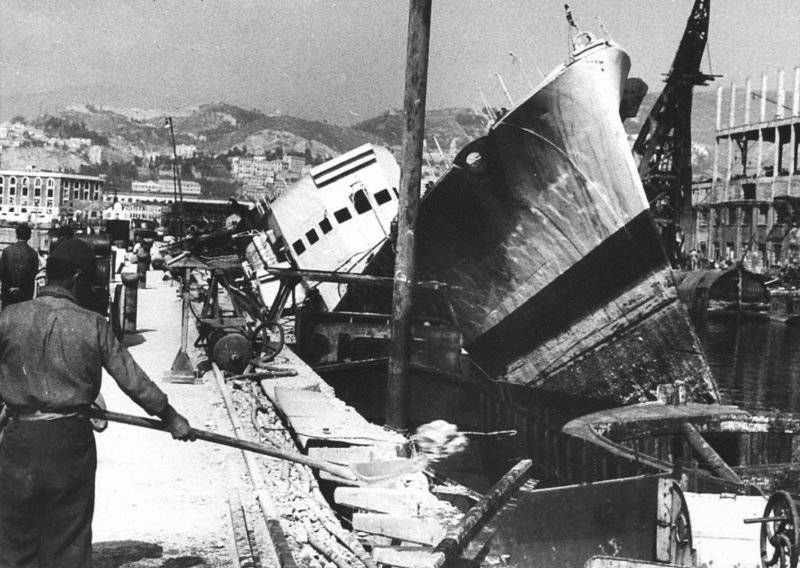
It is no coincidence that the British are of the opinion: "Italians build ships better than they can fight them."
And the Italians really knew how to build ships - the Italian school of shipbuilding has always been notable for noble swift lines, record speeds and inconceivable beauty and grace of surface ships.
Fantastic battleships of the “Littorio” type are among the best battleships of pre-war construction. Heavy cruisers of the Zara type are a brilliant calculation where all the advantages of the advantageous geographical position of Italy in the middle of the Mediterranean Sea are used (to the point of seaworthiness and autonomy - the native coast is always close). As a result, the Italians succeeded in embodying in the Zar design an optimal combination of security / fire / mobility with an emphasis on heavy armor. The best cruisers of the "Washington" period.
And how can you not remember the Black Sea leader "Tashkent", also built in the shipyards of Livorno! The full stroke of the 43,5 node, and in general, the ship was excellent.
Italians achieved a hit in the cruiser "Berwick", seriously damaging the last
Alas, despite the advanced technical equipment, Regia Marina - once the most powerful of the fleets in the Mediterranean, stupidly lost all the battles and turned into ridicule. But was it really so?
Slandered Heroes
The British can joke as much as they want, but the fact remains: in the battles in the Mediterranean, Her Majesty’s fleet lost 137 ships of the main classes and the 41 submarine. Another 111 surface combat units lost allies of Great Britain. Of course, half of them were sunk by German aircraft and submariners Kriegsmarine - but even the remaining part is enough to permanently record the Italian "sea wolves" in the pantheon of great naval warriors.
Among the trophies of the Italians -
- the battleships of Her Majesty "Velient" and "Queen Elizabeth" (undermined by the Italian combat swimmers in the roads of Alexandria). The British themselves classify these losses as constructive total loss. Speaking in Russian - the ship turned into a battered pile of metal with negative buoyancy.
Damaged battleships, one after another, fell to the bottom of the Alexandria Bay and knocked out for a year and a half.
- heavy cruiser "York": sunk by Italian saboteurs with the help of speedboats loaded with explosives.
- light cruisers “Calypso”, “Cairo”, “Manchester”, “Neptune”, “Bonaventcher”.
- dozens of submarines and destroyers under the flags of Great Britain, Holland, Greece, Yugoslavia, Free France, the USA and Canada.
For comparison, during the war years, the Soviet Navy did not sink a single enemy ship larger than a destroyer (in no way reproach Russian sailors - a different geography, conditions and the nature of the theater). But the fact remains - in the asset among the Italian sailors dozens of bright sea victories. So do we have the right to laugh at the achievements, feats and inevitable mistakes of the macaroni?
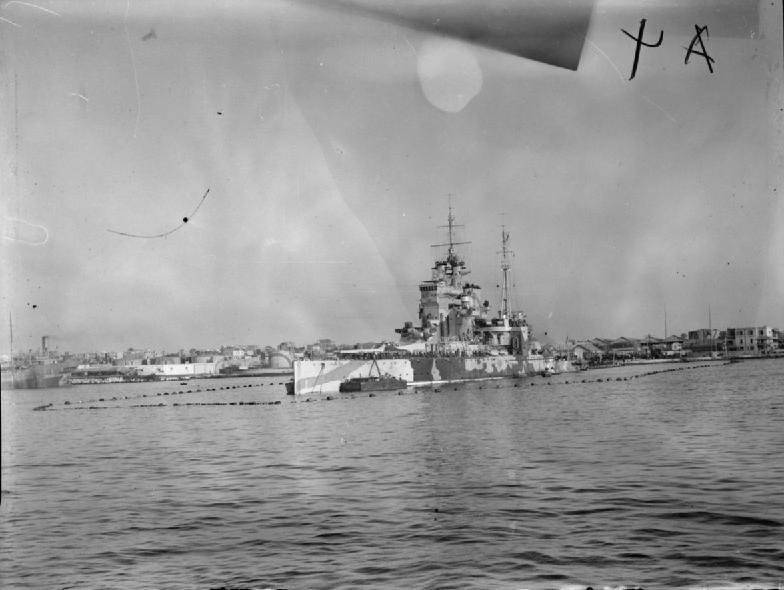
Submariners brought no less glory to Regia Marina, such as aces like Gianfranco Gazzana Priorizha (sank 11 transports with total w / 90 000 tons) or Carlo Fezia di Cossato (16 trophies). In total, a galaxy of the ten best Italian aces of the underwater war sank over one hundred ships and allied ships with a total displacement of 400 000 tons!
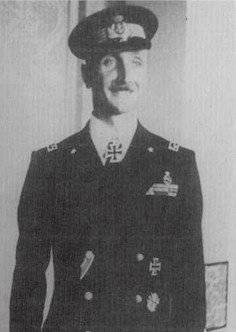
During the years of World War II, the Italian ships of the main classes made 43 207 sailing into the sea, leaving aft of 11 millions of fire miles. Sailors of the Italian Navy provided wiring for countless convoys in the Mediterranean theater of operations - according to official data, Italian sailors arranged for the delivery of 1,1 million troops and more than 4 million tons of various cargoes to North Africa, the Balkans and islands in the Mediterranean. The return route was carrying precious oil. Frequently cargoes and personnel were placed directly on the decks of warships.
According to statistics, transport vessels under cover of Regia Marina delivered 28 Italian and 266 German trucks to the African continent and tanks. In addition, in the spring of 1941, 15 pieces of equipment and 951 pack animals were transported along the Italy-Balkans route.
In total, during the period of hostilities, the Italian Navy warships deployed on communications in the Mediterranean 54 457 min. The Regia Marina naval aviation patrol made 31 107 sorties, spending 125 hours in the air.
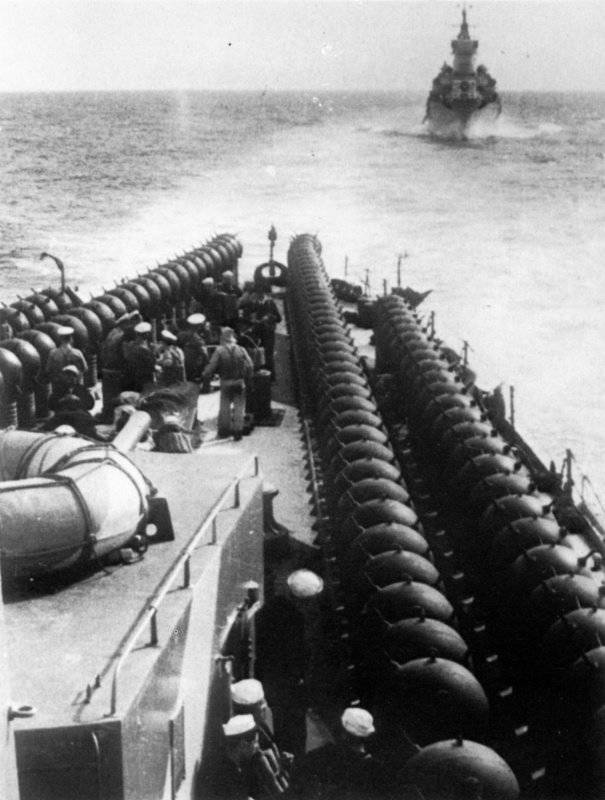
Italian cruisers "Duke d'Aosta" and "Eugenio di Savoia" put up a minefield off the coast of Libya. After a few months, the British strike compound will be blown up on the exposed mines. The cruiser "Neptune" and the destroyer "Kandahar" will go to the bottom
How do all these figures fit in with the ridiculous way of Krivorukov idlers, who are just doing that chewing their spaghetti?
Italians have long been great navigators (Marco Polo), and it would be too naive to believe that during the Second World War they just threw away the “white flag”. Italian Navy took part in battles around the world - from the Black Sea to the Indian Ocean. And high-speed Italian boats were noted even in the Baltic and on Lake Ladoga. In addition, the Regia Marina ships operated in the Red Sea, off the coast of China, and, of course, in the cold expanses of the Atlantic.
The Italians coolly patted the fleet of Her Majesty - only one mention of the "black prince" Valerio Borghese dismayed the entire British Admiralty.
Bandito saboteurs
"... Italians, in a certain sense, are much smaller soldiers, but much bigger gangsters" / M. Weller /
True to the traditions of the legendary "Sicilian Mafia", the Italian sailors were unsuitable for fair sea battles in an open format. The massacre at Cape Matapan, the disgrace in Taranto - the line and cruising forces of Regia Marina showed their complete inability to resist the well-trained fleet of Her Majesty.
And if so - then it is necessary to force the enemy to play by the Italian rules! Submarines, man-torpedoes, combat swimmers and boats with explosives. The British fleet expected major trouble.
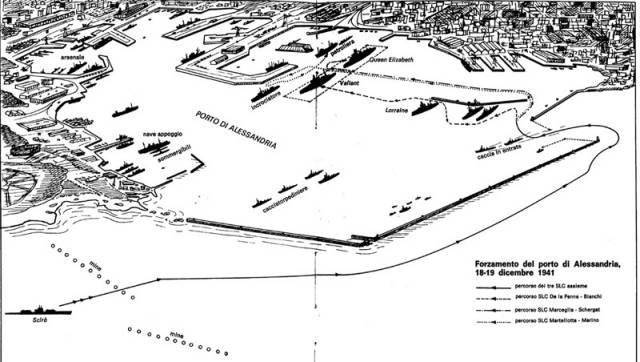
... On the night from 18 to 19 in December 1941, a British patrol fished out of Alexandria Bay two eccentrics in frog-robed clothes. Realizing that the case is unclean, the British secured all the hatches and doors in the watertight bulkheads of the battleships, gathered on the upper deck and prepared for the worst.
After a brief interrogation, the captured Italians were locked in the lower rooms of the doomed battleship, in the hope that the macaroni would finally break up and still explain what was going on. Alas, in spite of the danger they were facing, the Italian combat swimmers steadfastly remained silent. Before 6: 05 in the morning, when powerful explosive charges worked under the bottoms of the battleships “Valiant” and “Queen Elizabeth”. Another bomb tore off the naval tanker tanker.
Despite a whip "slap" from the Italian Navy, the British paid tribute to the crews of "man-torpedoes".
- Admiral E. Cannighem, commander of the Mediterranean forces of Her Majesty’s fleet
After the incident, the British frantically swallowed the air and looked for ways to protect their naval bases from Italian saboteurs. The entrances to all the large Mediterranean naval bases — Alexandria, Gibraltar, and La Valetta — were tightly blocked by nets, and dozens of patrol boats were on duty on the surface. Every 3 minutes another depth charge flew into the water. However, over the next two years of the war, the 23 vessel and the Allied tanker became victims of the frog people.
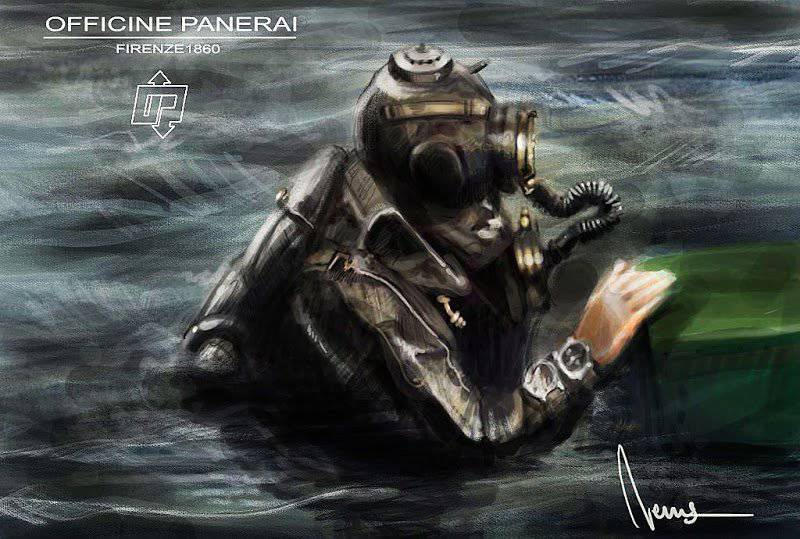
In April 1942, the Italians transferred an assault squad of speedboats and mini-submarines to the Black Sea. At first, the “sea devils” were based in Constanta (Romania), then in the Crimea and even in Anapa. The result of the actions of Italian saboteurs was the death of two Soviet submarines and three cargo ships, not counting the many sorties and sabotage on the coast.
The capitulation of Italy in 1943 caught the “special operations” department unawares - the “black prince” Valerio Borghese had just begun preparations for another ambitious operation - he was going to make a little “naughty” in New York.
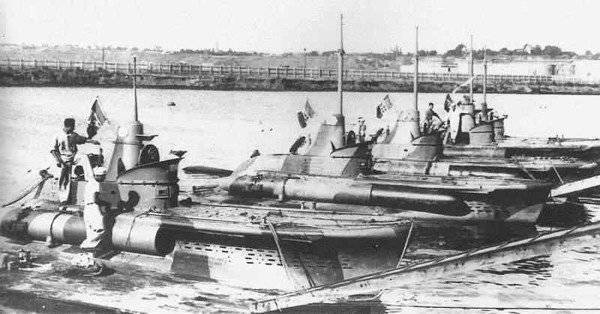

Colossal experience of the team Valerio Borghese was appreciated in the post-war years. All the existing techniques, technologies and developments have become the basis for the creation and training of special units of sea lions around the world. It is no coincidence that the Borghese combat swimmers are the main suspects in the death of the battleship Novorossiysk (the captured Italian Giulio Cesare) in 1955. According to one version, the Italians could not survive their shame and destroyed the ship, if only he did not go under the enemy flag. However, all this is just a guess.
Finale
At the beginning of the 21st century, the Italian navy is a compact European fleet armed with the most modern ships and systems weapons.
The modern Italian fleet is not at all like the leaning Tower of Pisa: the preparation and equipment of Italian sailors meets the most stringent NATO standards and requirements. All ships and aircraft are built into a single information space. When choosing weapons, the benchmark is shifted towards purely defensive means - anti-aircraft missile systems, anti-submarine weapons, near-self-defense means.
As part of the Italian Navy there are two aircraft carrier. There is a high-quality submarine component and basic naval aviation. The Italian Navy regularly takes part in peacekeeping and special missions around the globe. Technical equipment is constantly updated: when choosing a weapon, radio-electronic means of navigation, detection and communication, priority is given to leading European developers - the British BAE Systems, the French Thales, and its own Marconi corporation. Judging by the results, the Italians everything turns out great.
Nevertheless, one should not forget the words of commander Alexander Suvorov: There is no earth in the world that would be so studded with fortresses as Italy. And there is no land that is so often conquered.
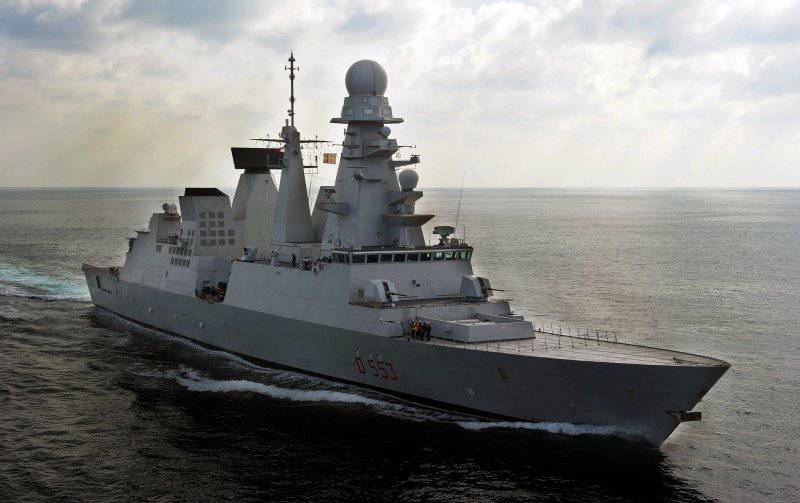
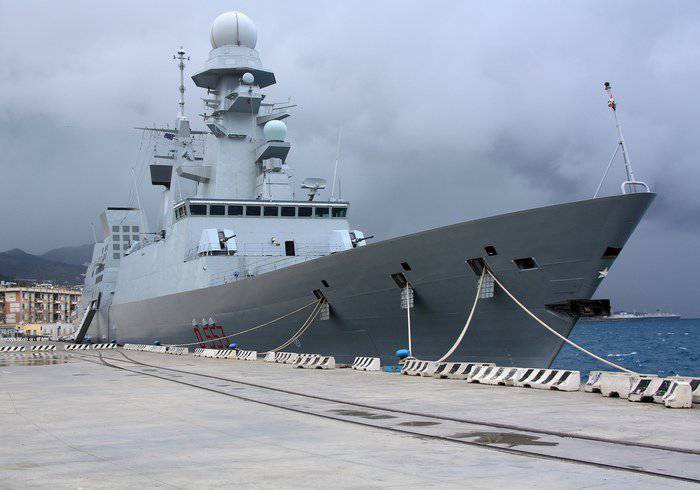
Statistical data -
"The Italian Navy in the Second World War", by the captain of 2 rank Marc Antonio Bragadin
Illustrations -
http://www.wikipedia.org/
http://waralbum.ru/
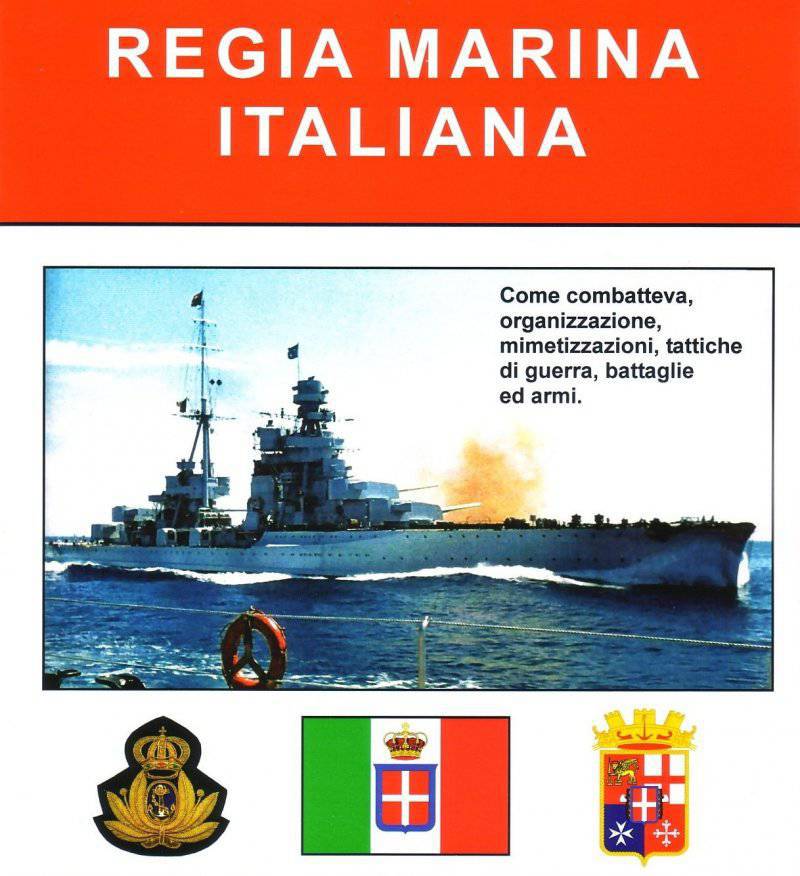
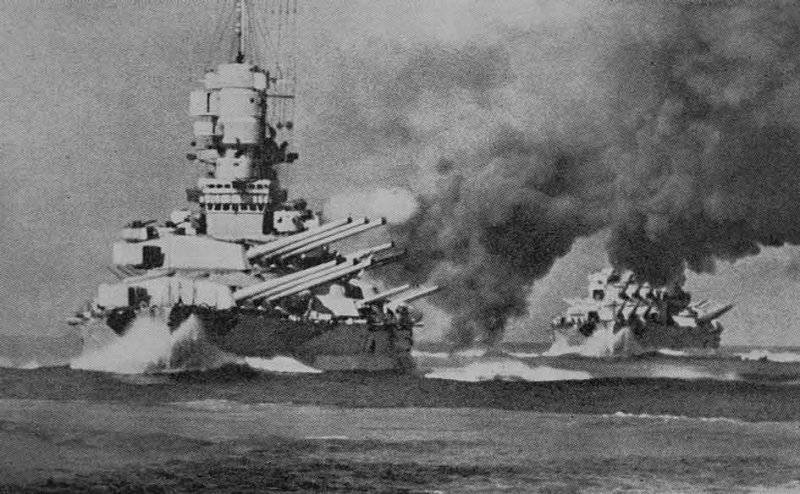
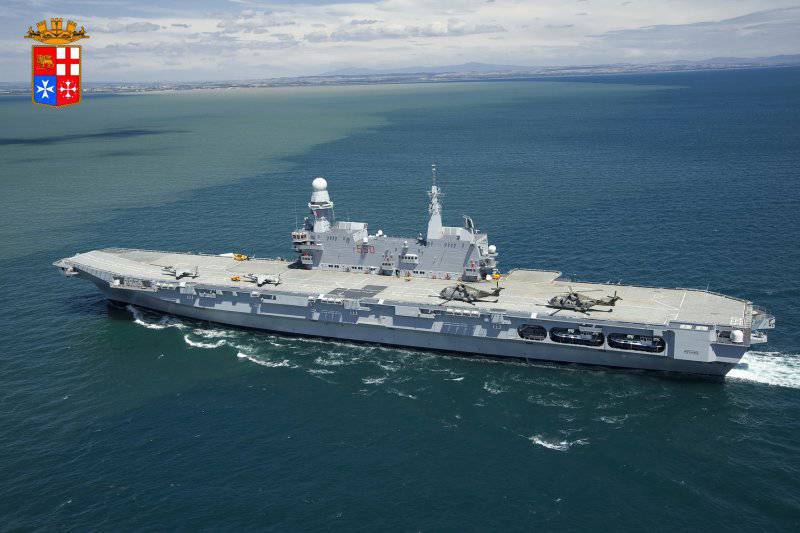
Information